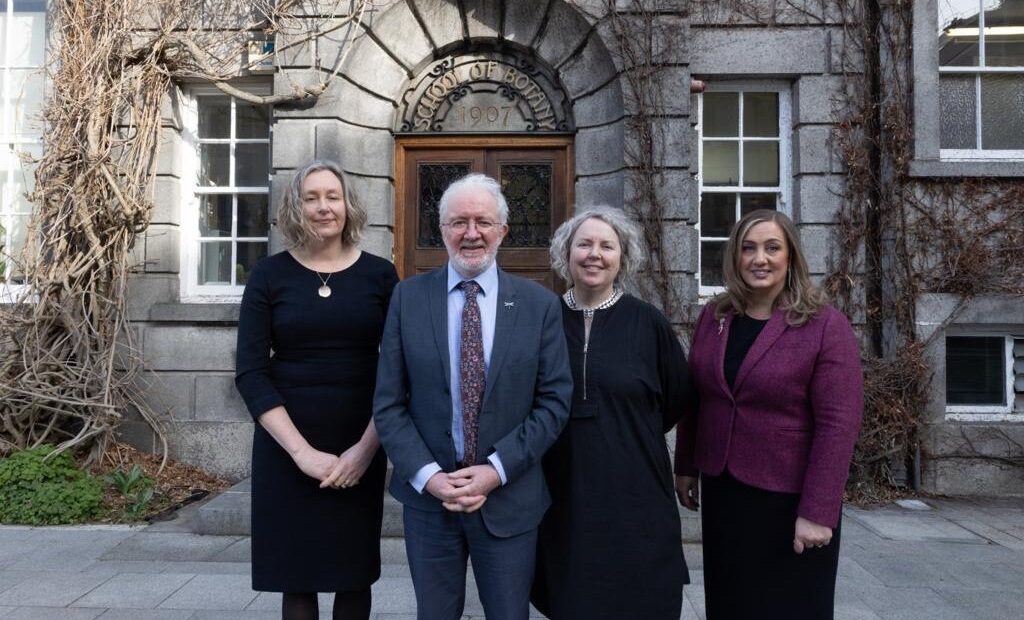The Minister of State for Heritage and Electoral Reform, Malcolm Noonan, announced funding of €1.5 million to enable Trinity College Dublin to transform, digitise and safeguard its herbarium.
Speaking from Trinity College, Minister Noonan said, “the collections at the herbarium in Trinity College are unique in terms of their rich international and historic scientific significance. I am delighted to be able to support this project via a very significant funding contribution through the National Parks and Wildlife Service. I am also very pleased that Trinity College will partner with the NPWS, as part of this project, to fund a number of PhD studentships which will be designed in partnership with the NPWS. These will provide a very valuable opportunity for the NPWS and Trinity School of Botany to work together in partnership and make significant advances in Irish scientific and biodiversity research.”
Minister Noonan detailed that the funding will provide physical infrastructure and enable the digitisation of 400,000 specimens, some of which are centuries old – making them easily accessible to the international research community as well as the public.
Trinity is co-funding the project by supporting three fully funded PhD positions in Irish biodiversity science, which will be co-designed with the National Parks and Wildlife Service (NPWS).
Professor Jane Stout, Vice President for Biodiversity & Climate Action Sustainability, and a professor in Trinity’s School of Natural Sciences, said, “we are thrilled to announce this partnership with the National Parks and Wildlife Service that will benefit Irish biodiversity via a significant investment in Trinity’s historic herbarium.”
“At Trinity we are committed to addressing the biodiversity and climate crises by delivering cutting edge research that informs policy and practice, and embeds these issues in the curriculum, preparing future generations of leaders. This project allows us to do just that – operate more sustainably, do the vital research required to conserve and restore biodiversity, and educate the next generation of scholars, not just here in Dublin, but also via new international links with researchers across the globe.”
Trinity’s herbarium is the only one in Ireland to contain significant international holdings from destinations such as Australia, North America, Mexico, South Africa and Thailand. One of the largest university herbariums in the world, it also contains specimens collected by Ellen Hutchins – arguably Ireland’s first female botanist – and Charles Darwin. Established by physician and botanist Thomas Coulter in the early 1800s for medicinal plant research, it has evolved into an essential resource for conservation and biodiversity research.
Part museum and part working laboratory, the herbarium is already an important piece of Irish heritage with its plant specimens containing irreplaceable scientific information that can be mined using advanced techniques to track trends in global biodiversity, to examine the impacts of climate change, and to inform conservation efforts.
But the collection of specimens and literature has now outgrown its historic footprint and requires a modern facility to keep the specimens safe and make them more accessible. A key component is the new state of the art system for digitising the specimens.
Ciara Carberry, Director of Nature Conservation at the National Parks and Wildlife Service said, “as a graduate of the School of Botany at Trinity College, I am delighted to see this recognition of the importance of the herbarium collections. The funding announced by Minister Noonan today and the partnership between the College and the National Parks and Wildlife Service will set the restoration and digitisation project on a sustainable footing and make sure the herbarium can be enjoyed by generations of students and scientists to come who, like me, can learn and study our wonderful natural heritage at this truly historic institution.”
Professor Trevor Hodkinson, curator of the herbarium and a professor in Trinity’s School of Natural Sciences, said, “Trinity College Dublin’s herbarium has one of the largest collections of plant specimens in Ireland, with approximately 400,000 dried plants. Together with our unique collection of books, some of which are more than 500 years old, our specimens provide a detailed record of Ireland’s natural history and contribute to our knowledge of the world’s biodiversity.”
Dr Peter Moonlight, assistant curator of the herbarium and an assistant professor in Trinity’s School of Natural Sciences, added, “thanks to the generous contribution from the government this project will safeguard the herbarium for the next hundred years. By allowing us to digitise our entire collection and make it available to the national and international research community, as well as the general public, we can ensure the legacy of Irish botanical research grows into the future and offer myriad new opportunities for important scientific research and discovery.”













